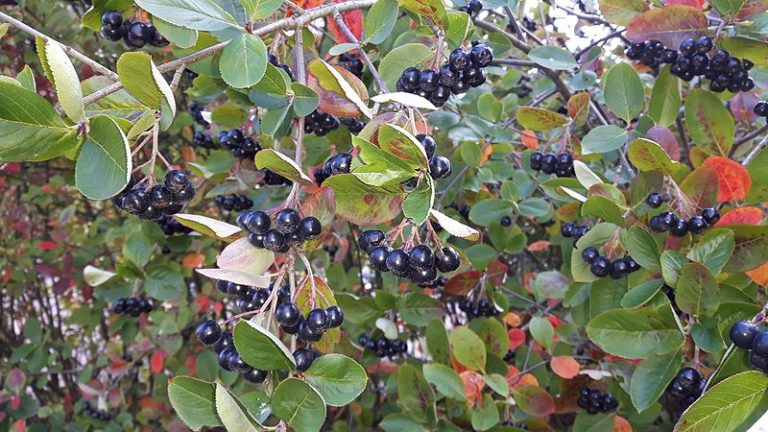Aronia prunifolia or Purple Chokeberry is a natural hybrid between A. arbutifolia (Red Chokeberry), and A. melanocarpa (Black Chokeberry), a more mountainous species. All three Chokeberries have very diferent distribution maps. Purple Chokeberry is much less abundant than the Red Chokeberry. It is much like Red Chokeberry in habit, that is, a deciduous, multi-stemmed, colonial shrub, and it also tolerates wet conditions, but is a bit shorter (5′-6′). Its flowers are slightly larger, the berries also a bit larger and a deep purple in color. It is true from seed in its geographic range but may cross with other members of the genus if nearby in the garden. Purple Chokeberry lends itself to mass plantings in an informal border where it provides spectacular fall foliage color and wildlife food. It is particularly useful in boggy swales or naturalized areas generally, where spreading can be unrestrained.
NURSERY HOURS
Wednesday: 10-4 Thursday: 10-6 Friday-Saturday: 10-4 Sunday: 12-4
Aronia prunifolia

Key Info
Scientific Name: Aronia ×prunifolia (Marshall) Rehder, (pro sp.) [arbutifolia × melanocarpa]
Common Names: Purple Chokeberry, Purple-fruited Chokeberry
Family Names: Rosaceae (Rose Family)
Plant Type: Tree / Shrub
Leaf Retention: Deciduous
Flower Color: White with bright red/pink prominent anthers
Special Characteristics: Edible fruit (in jams), Good wildlife cover, Rhizomatous, Attracts bees, Tolerates drought, Attracts butterflies, Showy fruit, Good fall color, Flowers fragrant, Attracts birds, Slow growing
Additional Info
Habit: Upright open shrub with suckering habit; the stand consists of many slender, upright individual stems; slow growing and well behaved.
Height: 5'-6'
Spread: 4'-8'
Soil Conditions: average to wet slightly acidic to slightly alkaline
Leaves: Oval-shaped leaves, 2.5 to 3 inches long, alternately arranged; dark green, finely serrated, whitish sparse pubescence beneath but less pubescence than A. arbutifolia; impressive fall coloration in reds, golds and purples.
Flowers (or reproductive structures: Five bright white petals with red/pink anthers; fragrant.
Fruit: Deep purple berries that ripen in October to December; do not persist into the winter
Natural Distribution: Balds, bogs, seepages, swamp forests. Moist woods and swamps but also upland sites; not coastal, but midwestern and northeastern U.S.
USDA Hardiness Zone: 4-7
USDA Wetland Indicator Status in NC: FACW
Pollination: Bees, butterflies, other insects
Wildlife Connections: Butterflies and bees are attracted to the flowers, birds and small mamals eat the fruit. Good cover for ground dwelling birds and mammals.
Propagation: In the wild, it spreads both by seed and also from suckers from the roots.
